Dodge has long held a revered place in American muscle car lore, standing alongside other legendary manufacturers like Chevrolet and Ford. The brand’s muscle cars embody raw power, aggressive styling, and a distinctive rumble that has thrilled enthusiasts for generations.
From the iconic Dodge Charger and Challenger to the modern-day Hellcat and Demon, these machines have captivated the hearts of drivers who crave performance and heritage.
Yet, as with any performance-oriented vehicle, the question of longevity—how well these cars stand the test of time—and mechanical quirks like oil consumption have played significant roles in shaping owners’ experiences and perceptions.
Understanding which Dodge muscle cars offer reliability and durability, and which are notorious for “eating” oil, is essential for collectors, enthusiasts, and anyone interested in muscle car culture.
Muscle cars are often seen as beasts that demand constant attention and maintenance. Their high-performance engines, engineered to deliver tremendous horsepower and torque, operate under more strenuous conditions than typical passenger cars.
This places enormous stress on internal components, which can lead to premature wear if not engineered or maintained properly. Among Dodge’s muscle cars, some models have built reputations for longevity and relative mechanical robustness, while others—often due to design choices or early production teething problems—have become infamous for excessive oil consumption.
Oil consumption in muscle cars is more than just a nuisance; it can be a symptom of deeper mechanical issues, such as worn piston rings, valve stem seals, or faulty crankcase ventilation systems. These factors not only affect performance but also the lifespan and reliability of the vehicle.
The balance between performance and durability is a fine line that Dodge has navigated differently across decades and models. Classic muscle cars from the 1960s and early 1970s, such as the Dodge Charger R/T and Challenger, were engineered in an era when simplicity and mechanical strength were paramount.
Their large-displacement V8 engines featured forged internals and robust components that, while powerful, were also built to endure aggressive driving and long distances. These models have stood the test of time, often requiring only routine maintenance and occasional rebuilds to remain on the road.
Conversely, some of Dodge’s muscle cars, particularly those from transitional periods or early modern iterations, have exhibited design flaws or suffered from the growing pains of evolving technology, resulting in higher oil consumption and increased maintenance demands.
In more recent years, Dodge muscle cars have embraced cutting-edge technology to push performance boundaries further than ever before. Models like the Charger SRT Hellcat and the Demon have redefined muscle car power with supercharged engines producing well over 700 horsepower.
However, this leap in performance has brought new challenges in durability and oil consumption. Modern engineering employs forged components and advanced materials to mitigate wear, but the extreme stresses and thermal loads of these engines still necessitate vigilant maintenance to prevent excessive oil use.
Enthusiasts must adapt to this reality, balancing the thrill of blistering acceleration with the responsibility of caring for such high-performance machines.
Ultimately, the story of Dodge muscle cars is a tale of contrasts: enduring classics that combine power with mechanical resilience, and some high-performance variants that, while awe-inspiring in speed, demand careful upkeep to manage oil consumption and wear.
For those passionate about muscle cars, understanding these nuances is crucial to making informed decisions, whether buying, restoring, or simply appreciating these legendary vehicles.
This article will explore five Dodge muscle cars celebrated for their longevity and five that are notorious for their oil-eating tendencies, shedding light on the engineering, maintenance, and historical factors behind these reputations.
Also Read: Top 10 Vehicles With Storage Bins That Are Great for First Aid Kits
5 Dodge Muscle Cars with Longevity
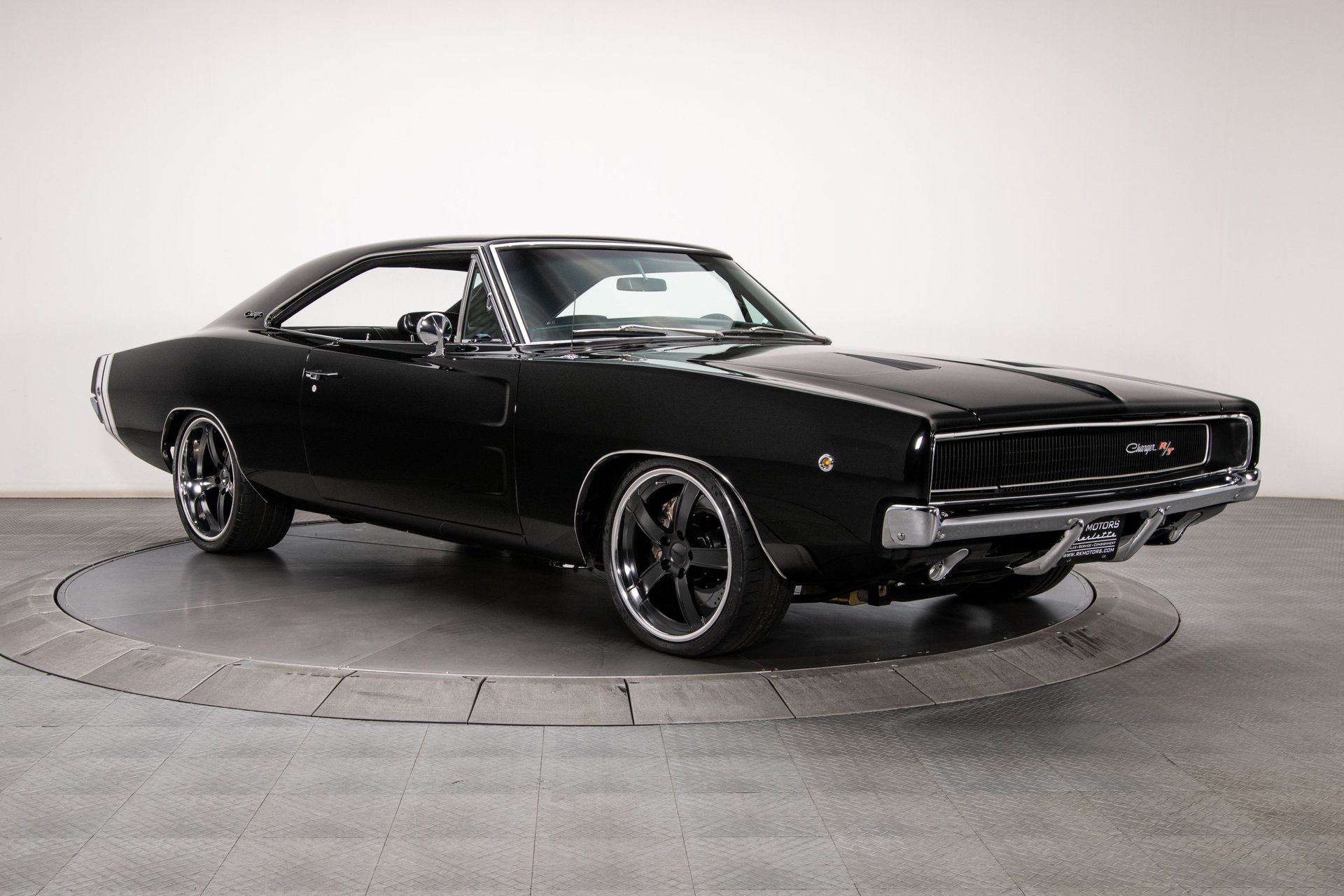
1. Dodge Charger R/T (1968-1970)
The Dodge Charger R/T from the late 1960s is more than just a muscle car icon—it’s a symbol of durability in an era when American automakers were pushing boundaries with raw power. What sets the Charger R/T apart in terms of longevity is the combination of its robust engine designs, such as the 440 Magnum and the legendary 426 HEMI, paired with a solid chassis that was engineered to withstand aggressive driving conditions.
These engines, especially the 426 HEMI, were developed not only for peak horsepower but also for endurance, featuring forged pistons, heavy-duty connecting rods, and robust crankshafts. Such high-quality components allowed these cars to sustain high RPMs and prolonged periods of power delivery without premature wear, an achievement for performance vehicles of that time.
In addition to the engine durability, the Charger’s drivetrain and suspension systems were built with strength and longevity in mind. The transmission options, including the TorqueFlite 727 automatic and the robust 4-speed manual, were known for their ability to handle the torque output of big-block engines reliably.
The rear suspension, with its leaf springs and heavy-duty rear axle assemblies, was designed to manage the car’s substantial power and weight, preventing premature wear or failure under street or strip conditions. This mechanical reliability made the Charger R/T a favorite for drag racers and street enthusiasts alike, many of whom continue to enjoy these cars today with minimal extensive rebuilds.
Another key to the Charger R/T’s longevity is the simplicity and accessibility of its mechanical design. Without the complex electronics and emissions systems that later muscle cars were saddled with, the 1968-1970 Charger was easier to maintain, repair, and restore. Enthusiasts could work on their vehicles with basic mechanical knowledge and tools, extending the life of these cars well beyond what might be expected for performance vehicles of that era.
Furthermore, the vast availability of replacement parts and the strong community of restorers and collectors have helped keep these Chargers on the road and in running condition. This combination of mechanical durability, ease of maintenance, and aftermarket support has cemented the Charger R/T as one of the most enduring muscle cars in Dodge’s history.

2. Dodge Challenger (1970-1974)
The Dodge Challenger of the early 1970s is another muscle car that has become synonymous with longevity, thanks to its blend of powerful yet reliable engines and a chassis designed for performance and durability. This muscle car came equipped with a variety of engines, but the 383 and 440 cubic inch V8s stood out as particularly robust options, delivering a balance of power and mechanical soundness.
These engines were crafted with reinforced internal components that allowed them to endure high RPMs and hard driving without succumbing to common issues like excessive wear or overheating.
The optional 426 HEMI, while rare, further enhanced the Challenger’s reputation, as it was engineered to be both a dominant performer and a durable powerhouse, favored in drag racing circles for its legendary strength.
The Challenger’s body structure and suspension design also contributed significantly to its longevity. With a unibody construction that combined rigidity and weight savings, the car offered excellent handling characteristics while reducing stress on individual components.
The suspension system, including heavy-duty front springs and leaf springs at the rear, was engineered to manage the large torque output and provide durability during aggressive acceleration and cornering.
This thoughtful design prevented early failure of suspension parts and helped maintain the vehicle’s integrity over many miles of spirited driving. Additionally, the cooling system was designed to accommodate the heat generated by high-displacement engines, which minimized overheating risks and extended engine life, a critical factor for longevity.
Another factor supporting the Challenger’s lasting reputation is its relative mechanical simplicity paired with the availability of parts and community support.
Unlike modern muscle cars burdened with electronic controls and complex emissions gear, the Challenger’s straightforward carbureted engines and manual or automatic transmissions made for easier upkeep and repairs.
Owners could perform routine maintenance and restorations without specialized tools or knowledge, helping preserve many examples for decades.
The car’s popularity has also ensured a strong aftermarket, which provides replacement parts and performance upgrades that do not compromise reliability. This extensive support network, combined with solid engineering,g underpins the Challenger’s status as a muscle car that can be enjoyed reliably for many years.
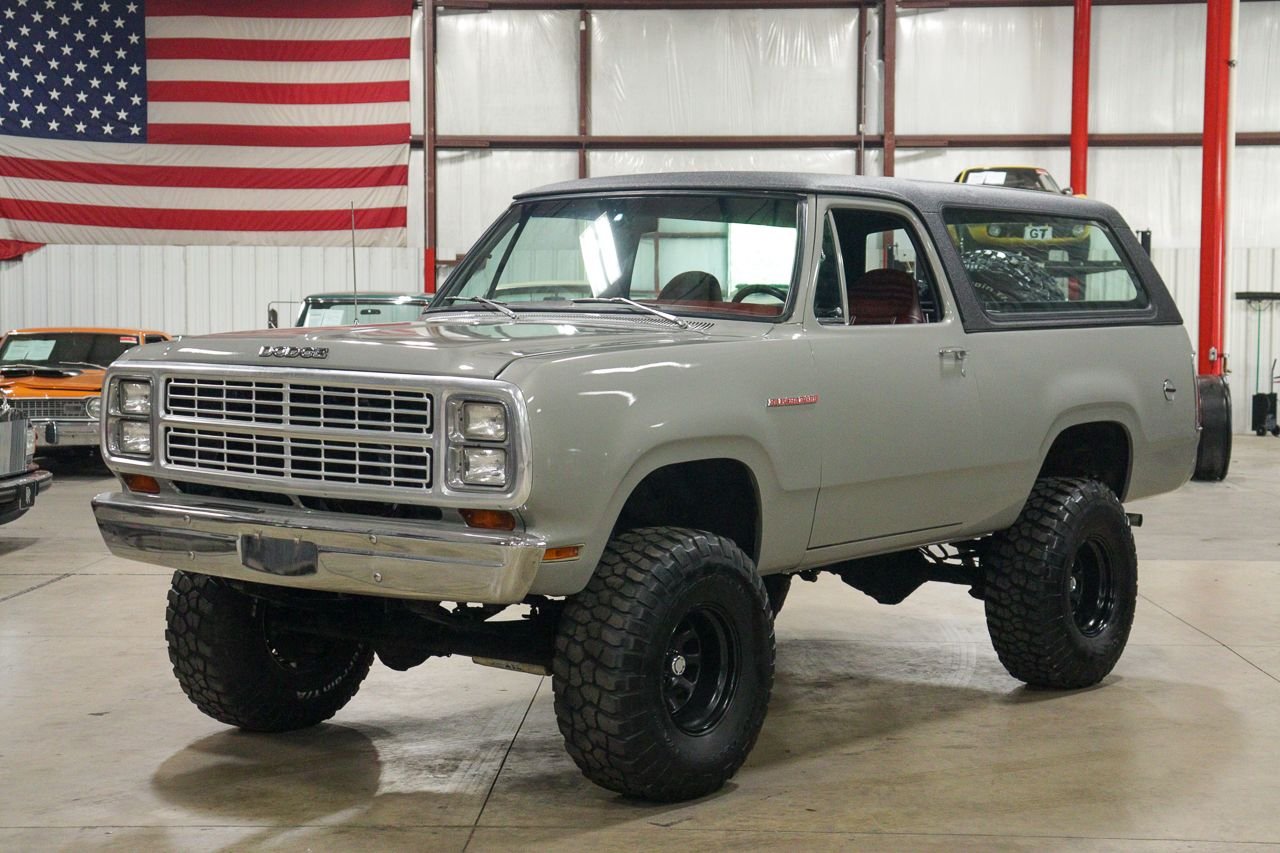
3. Dodge Ramcharger (1974-1993)
While not a traditional muscle car, the Dodge Ramcharger SUV occupies a unique place in Dodge’s lineup due to its rugged construction and powerful V8 engines that shared many components with muscle cars of the era.
The Ramcharger was built to handle rough terrain and heavy-duty use, which translated into a reputation for mechanical durability and longevity that is rare among performance vehicles.
Its engines, including the 360 and 440 cubic inch V8s, featured robust castings, heavy-duty internals, and conservative tuning that prioritized endurance over peak horsepower. This focus on reliability allowed the Ramcharger to accumulate high mileage in harsh environments, such as off-road trails and rural roads, with relatively low rates of catastrophic engine failure.
Structurally, the Ramcharger was designed on a traditional body-on-frame chassis, which provided significant strength and rigidity. This design is well-suited for vehicles expected to endure heavy loads and rough terrain, as it reduces stress concentrations and flexing that can accelerate wear in unibody cars.
The solid front and rear axles, leaf spring suspensions, and heavy-duty drivetrain components made the Ramcharger a workhorse capable of withstanding years of abuse while maintaining mechanical integrity.
This durability extended to the transmission and differential assemblies, which were engineered to handle the torque of large-displacement engines in low and high gears under demanding conditions.
Ease of maintenance and mechanical accessibility also play a major role in the Ramcharger’s longevity. The engine bay was spacious, allowing for easier repairs and component replacements, even in off-road or field conditions.
Additionally, Dodge provided extensive service manuals and parts catalogs, and the vehicle was supported by a dedicated enthusiast community that helped source parts and provide advice for repairs and upgrades.
Owners who stayed diligent with routine maintenance such as oil changes, coolant flushes, and suspension checks, found their Ramchargers to be reliable and long-lasting, making this SUV a testament to Dodge’s engineering for durability and endurance outside the traditional muscle car mold.

4. Dodge Dart Swinger (1967-1970)
The Dodge Dart Swinger, though smaller and less powerful than many of Dodge’s classic muscle cars, has earned a reputation for surprising durability and longevity. It was equipped with a variety of engine options, but the 340 cubic inch V8 became a standout for delivering respectable performance with mechanical reliability.
The 340 was designed with a focus on balanced power output and long-term durability, featuring a forged steel crankshaft, strong connecting rods, and high-quality piston materials. This attention to durability made the Dart Swinger a popular choice among muscle car enthusiasts who wanted performance without sacrificing long-term reliability or manageable maintenance.
Mechanically, the Dart benefited from a simpler drivetrain and chassis setup that placed less strain on its components compared to larger muscle cars.
Its lighter curb weight reduced stress on the engine, transmission, and suspension, enabling longer component life. The transmission options included reliable manual and automatic gearboxes that were less prone to overheating and wear.
The suspension, while not as performance-oriented as some muscle cars, was designed for durability and comfortable handling, which helped prevent chassis fatigue and component failure even after years of use. The engineering philosophy of balancing power with dependability paid dividends in the Dart’s longevity.
Another reason for the Dart Swinger’s reputation is its widespread availability and extensive aftermarket support, which made restoration and maintenance more accessible for owners. Parts availability has been strong over the decades, and the Dart community remains passionate about preserving these vehicles.
This support, combined with the car’s mechanical simplicity and solid engineering, means that many Dart Swingers continue to run smoothly today. The vehicle’s reputation as a durable, long-lasting muscle car alternative is well-earned, making it an appealing option for collectors and enthusiasts who value reliability as much as performance.
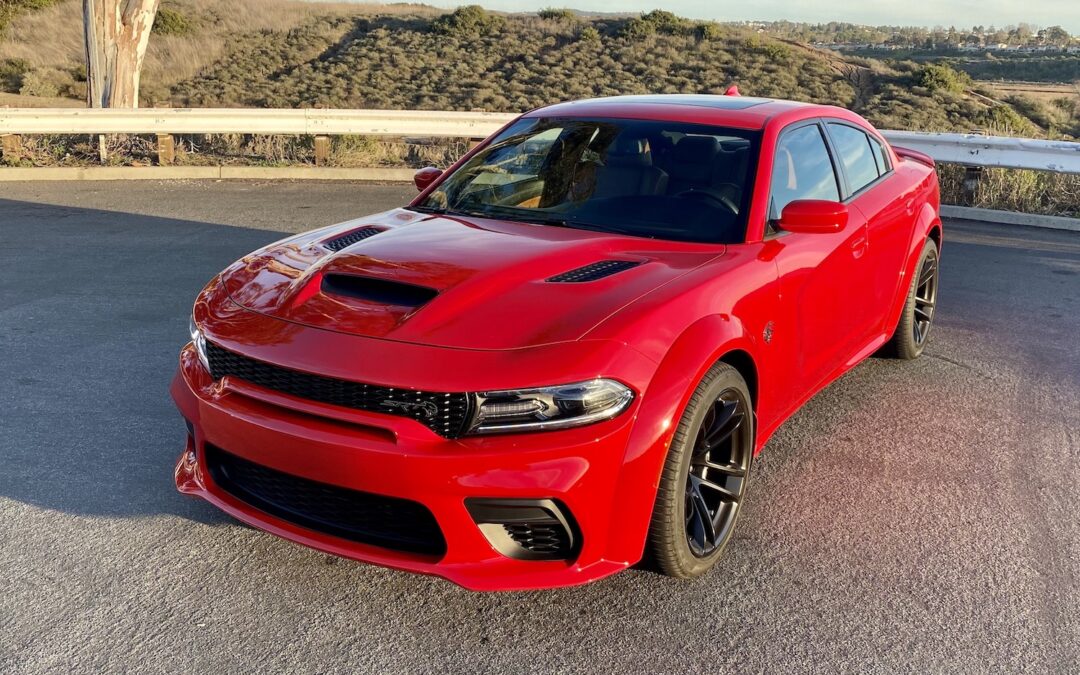
5. Dodge Charger SRT Hellcat (2015-Present)
In the modern muscle car era, the Dodge Charger SRT Hellcat is a standout example of how high performance and longevity can coexist with proper engineering and maintenance. The Hellcat’s 6.2-liter supercharged HEMI V8 produces an astonishing amount of horsepower and torque, yet it benefits from modern technologies designed to enhance durability.
These include forged internal components such as pistons and connecting rods, advanced cooling systems with additional heat exchangers, and sophisticated engine management software that monitors and adjusts parameters to prevent undue stress. These factors contribute to the Hellcat’s ability to sustain extreme power output while maintaining reliability over extended mileage.
Beyond the engine, the Hellcat’s drivetrain and chassis components have been engineered for durability as well. The heavy-duty Tremec manual transmission or the reinforced 8-speed automatic transmission is designed to cope with the engine’s torque without excessive wear.
Suspension components are robust, offering not only high performance but also resilience under the strain of aggressive driving. Advanced materials and manufacturing processes help reduce wear on critical parts and improve longevity. This blend of performance and durability is a hallmark of modern muscle car engineering, representing a significant evolution from the simpler muscle cars of past decades.
Moreover, the Hellcat benefits from a strong and growing aftermarket and factory support network, ensuring that owners have access to quality parts and expert service. Modern diagnostic tools and onboard sensors allow for early detection of potential issues, enabling preventative maintenance that extends the vehicle’s lifespan.
Owners who follow manufacturer recommendations for oil changes, cooling system care, and driving habits typically enjoy Hellcats that remain reliable well beyond the 100,000-mile mark. This combination of cutting-edge engineering and diligent maintenance makes the Charger SRT Hellcat one of the best examples of muscle car longevity in the contemporary automotive landscape.
5 Dodge Muscle Cars That Eat Oil

1. Dodge Dart 270 (1960-1966)
The Dodge Dart 270, especially models from the early 1960s, is infamous among muscle car enthusiasts for its tendency to consume oil at a rate that frustrates many owners. One primary reason for this oil appetite lies in its early engine design, which lacked many of the refinements that came later in the muscle car era.
The Dart 270 often came equipped with inline-six and small V8 engines that were prone to wear, especially in the valve guides and piston rings, leading to oil seepage into the combustion chambers.
The engines were designed during a time when manufacturing tolerances and materials weren’t as advanced, which contributed to the degradation of seals and rings over time. Consequently, the oil consumption in these vehicles was not just an isolated problem but a common mechanical characteristic.
Furthermore, the Dart 270’s relatively basic crankcase ventilation system contributed to oil consumption issues. The Positive Crankcase Ventilation (PCV) system, which helps reduce internal engine pressure and recycles oil vapors, was either rudimentary or absent in some early models, allowing excess oil to be pulled past worn seals and into the intake manifold and cylinders.
Additionally, the piston ring designs in these engines often allowed oil to slip into the combustion chambers, especially under conditions of high engine load or prolonged idling
. The result was a consistent need for oil top-ups, and many owners had to remain vigilant about oil levels to avoid engine damage. These oil-eating tendencies significantly impacted the car’s reputation among muscle car fans who valued not only power but also reliability and ease of maintenance.
On top of mechanical design issues, maintenance practices at the time also influenced the Dart 270’s oil consumption woes. Many owners of these muscle cars often did not have the resources or knowledge to maintain tight tolerances or regularly replace worn seals and rings, accelerating oil burn problems.
The lack of modern synthetic oils, which provide better sealing and reduced wear, meant that engines were subjected to harsher internal conditions, further exacerbating oil consumption.
Despite its shortcomings, the Dodge Dart 270 remains a significant piece of muscle car history, but its oil consumption issues serve as a cautionary tale for enthusiasts looking for a muscle car with true longevity and low maintenance.
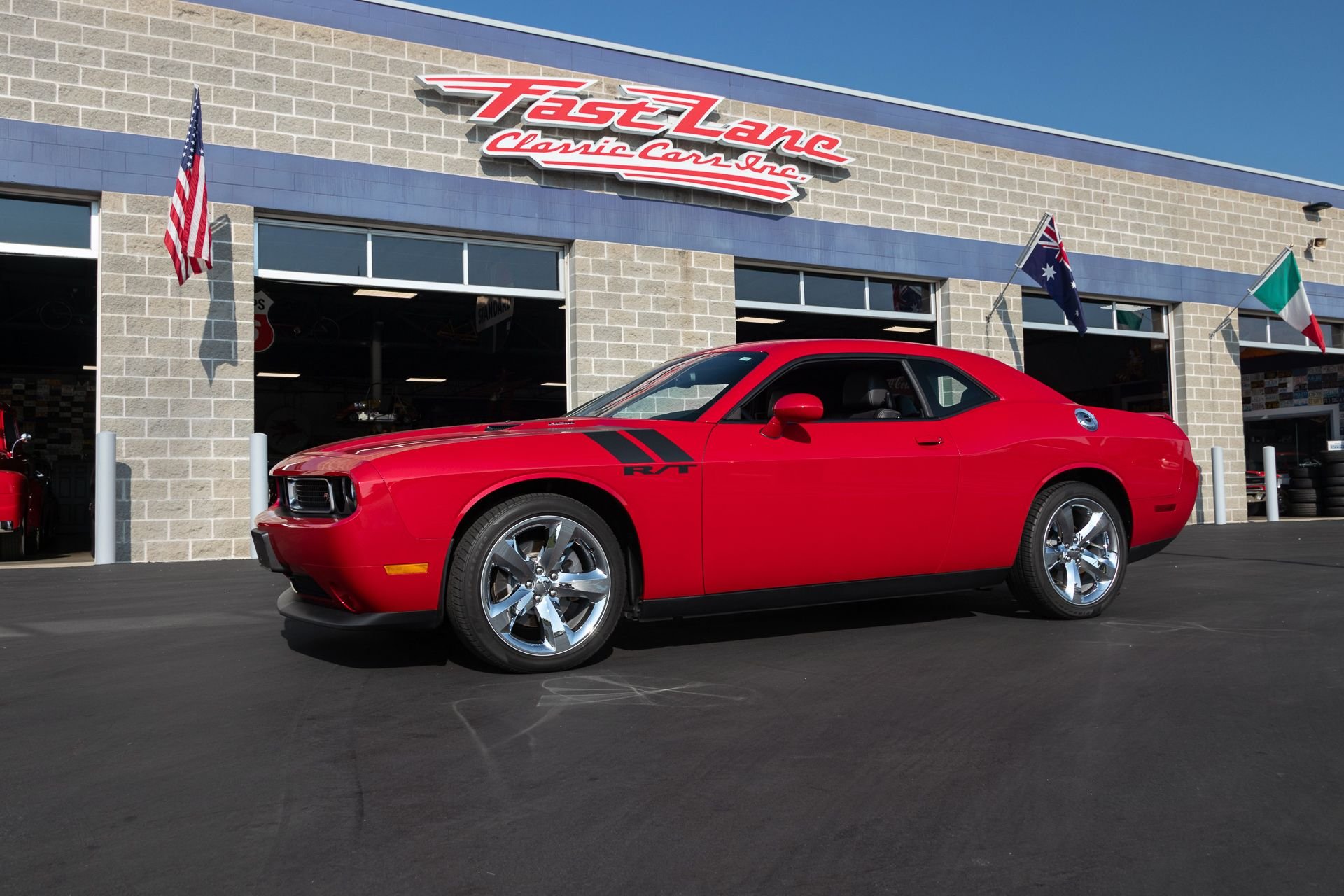
2. Dodge Challenger (2008-2014, Early SRT8 Models)
While the Dodge Challenger has a strong reputation, the early 2008-2014 models, particularly those equipped with the SRT8’s 6.1L HEMI engine, have been reported by some owners to exhibit excessive oil consumption.
This is largely due to the design of the cylinder walls and piston rings, which in these early HEMI engines sometimes failed to maintain an effective seal as the vehicle accumulated miles.
The piston ring design, which is crucial to prevent oil from entering the combustion chamber, was less robust in these initial iterations, allowing oil to seep past and burn during normal engine operation. The supercharged and high-performance variants tended to exacerbate this problem due to increased cylinder pressures, which put extra stress on seals and rings.
Moreover, some of these early Challenger SRT8 models suffered from valve stem seal wear, another common cause of oil burning in high-performance engines. Valve stem seals prevent oil from leaking into the combustion chamber through the valve guides, and once worn, they allow oil to seep in and burn along with the air-fuel mixture.
This condition is often most noticeable during cold starts and high RPM driving, where increased vacuum and cylinder pressures draw more oil past the seals. Owners who drove their Challengers aggressively, or who subjected them to track days, reported oil consumption rates that required frequent monitoring and oil top-offs to avoid engine damage or oil starvation.
Another contributing factor to oil consumption in these Challengers was inconsistent PCV system performance. The PCV valve and related components regulate internal engine pressures and recycle crankcase vapors, but if clogged or malfunctioning, they can lead to increased pressure that pushes oil past seals and rings.
Some owners reported that replacing or upgrading the PCV system components helped reduce oil consumption, but this wasn’t a universal fix.
Despite these oil-related challenges, many owners still appreciated the Challenger SRT8 for its power and aggressive styling, though they learned to keep a close eye on oil levels and maintenance schedules. This experience highlights the importance of routine checks and preventative maintenance in modern muscle cars, especially those with high-output engines.

3. Dodge Charger (2011-2014, Early Hellcat Variants)
Early model years of the modern Dodge Charger, especially those Hellcat variants produced between 2011 and 2014, have been noted for oil consumption issues related to their massive 6.2-liter supercharged HEMI engines.
The sheer power output of over 700 horsepower demands an engine design that can withstand incredible stress, and in some early production models, the piston rings and cylinder walls struggled to keep oil consumption in check.
These engines were pushing the limits of modern muscle car technology, and initial iterations sometimes showed premature wear, particularly in the top compression rings. This wear allowed oil to leak into the combustion chamber, leading to burning oil and noticeable drops in oil level between changes.
Additionally, the extreme heat generated by the supercharged engines compounded the oil consumption problem. Heat accelerates wear on engine components, including piston rings and valve stem seals, and also breaks down engine oil faster, reducing its lubricating and sealing properties.
While Hellcat engines are equipped with sophisticated cooling systems and use high-quality synthetic oils, owners who frequently drove their Chargers aggressively reported higher-than-normal oil consumption rates.
This tendency required more frequent oil changes and vigilant oil level monitoring to prevent engine damage. The performance focus of the Hellcat, combined with the early production teething issues, contributed to a perception among some owners that these vehicles “ate” oil more than other muscle cars.
Valve stem seals and the PCV system also played roles in oil consumption issues in these early Hellcat Chargers. Valve stem seal degradation can allow oil to drip into the combustion chambers, particularly noticeable during startup or at low RPMs. The PCV system, designed to maintain crankcase pressure, if clogged or malfunctioning, can increase pressure and force oil past the seals.
Dodge updated some components in later model years to address these issues, and improved manufacturing tolerances reduced the problem over time. Nevertheless, the early Hellcat Chargers serve as a reminder that high-output muscle cars often require extra care and maintenance to manage their oil consumption tendencies and maintain long-term reliability.

4. Dodge Super Bee (1968-1971)
The Dodge Super Bee, while a beloved classic muscle car, is also known for certain mechanical quirks, including its tendency to consume oil under specific conditions.
This is primarily linked to the engine choices available during its production years—most notably, the 383 and 440 cubic inch V8 engines that, despite being strong performers, sometimes exhibited oil consumption due to piston ring wear and valve seal issues.
The high-revving nature of the Super Bee’s powerplants put extra strain on the piston rings, especially when paired with carburetors tuned for performance rather than efficiency. Over time, this led to ring wear and subsequent oil seeping into the combustion chamber, causing higher oil consumption than average.
Compounding this issue was the relatively primitive oil control technology of the late 1960s muscle car era. The engines lacked many modern features, such as multi-layer steel piston rings or advanced valve stem seal materials, making them more susceptible to oil leakage.
Furthermore, carburetor jets and tuning designed to maximize power output sometimes caused incomplete combustion or excessive oil vaporization, which could further increase oil consumption.
The heavy use of these vehicles in drag racing or high-performance street driving often accelerated wear on the internal components, leading to even higher rates of oil consumption in poorly maintained or abused examples.
Maintenance practices also played a crucial role in the Super Bee’s oil consumption history. Many owners of these muscle cars didn’t adhere to strict oil change intervals or use high-quality oils, which resulted in sludge buildup and accelerated ring wear.
Engine overheating, which was common in some muscle cars of this era, also hastened the breakdown of seals and gaskets, worsening oil leaks and consumption.
Despite these challenges, the Super Bee remains a highly regarded muscle car, loved for its aggressive styling and performance. However, prospective owners and restorers must be aware of its oil consumption tendencies and be prepared for diligent maintenance and possible engine rebuilds to keep it running smoothly.
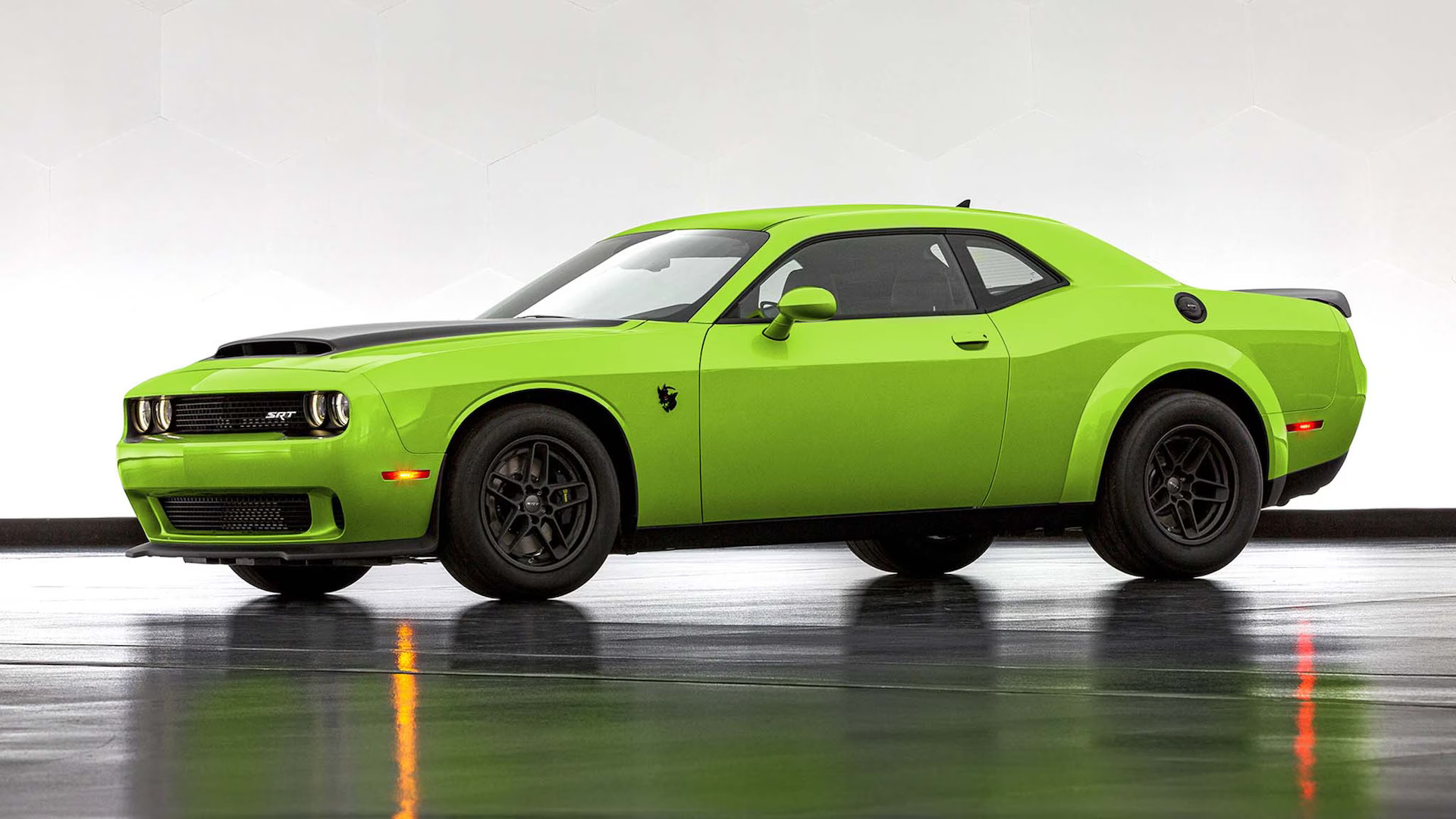
5. Dodge Demon (2018-Present)
The modern Dodge Demon, a limited-production muscle car designed for drag strip domination, is another high-performance vehicle known for high oil consumption under certain conditions.
Equipped with a supercharged 6.2-liter HEMI V8 similar to the Hellcat but tuned for even more extreme performance, the Demon’s engine places enormous demands on piston rings and valve seals.
The aggressive tuning and forced induction increase cylinder pressures and temperatures, which can accelerate wear and create pathways for oil to enter the combustion chamber. Though the Demon was engineered with advanced materials and technologies, the sheer stress of its output means oil consumption is more pronounced than in typical muscle cars.
Heat management is critical in the Demon’s engine longevity, but the extreme conditions under which it operates—such as multiple drag runs or track days, can overwhelm even the best cooling systems. High temperatures degrade engine oil quickly, reducing its ability to lubricate and seal effectively.
This degradation causes the oil to break down chemically and lose viscosity, allowing it to slip past piston rings more readily. Additionally, the intense power delivery and rapid spool-up of the supercharger result in transient operating conditions where oil control is more challenging, increasing consumption during spirited driving.
Owners who treat their Demons as intended—pushing them hard—must accept frequent oil checks and changes as part of the ownership experience. Finally, despite its oil consumption tendencies, the Dodge Demon has been praised for its build quality and advanced engineering.
Features such as forged pistons, high-strength rods, and a reinforced block contribute to engine durability. The Demon also uses a sophisticated PCV system and improved valve stem seals to mitigate oil loss compared to older muscle cars.
However, the high-output nature of the engine means oil consumption will never be negligible, and careful maintenance is essential. For enthusiasts, the Demon represents the pinnacle of muscle car performance, where occasional oil top-offs are an accepted trade-off for unparalleled speed and acceleration.
Also Read: 10 Cars With Best Dash Designs That Bring Innovation
Dodge muscle cars represent an iconic chapter in automotive history, embodying the spirit of American performance and style. Their thunderous engines, bold designs, and raw driving excitement have made them a favorite among enthusiasts and collectors worldwide.
Yet, as with any high-performance machine, the story of Dodge muscle cars is not just one of unbridled power and speed; it is also a tale of engineering trade-offs, mechanical challenges, and the constant balancing act between performance and durability.
Through examining the models known for their longevity alongside those notorious for oil consumption, it becomes clear that owning and appreciating a Dodge muscle car requires a nuanced understanding of these dynamics.
Muscle cars that have earned reputations for longevity, such as classic Dodge Chargers and Challengers with well-built engines, highlight the benefits of solid engineering and robust manufacturing practices. These vehicles were often designed with simpler mechanical systems and heavy-duty components that prioritized durability alongside performance.
The use of forged internals, reliable sealing technologies, and effective crankcase ventilation allowed these engines to endure decades of spirited driving with proper maintenance. Owners of these muscle cars often enjoy peace of mind knowing that their vehicles can deliver thrilling power without the constant worry of oil depletion or catastrophic engine wear.
The longevity of these muscle cars serves as a testament to Dodge’s ability to blend performance with reliability during certain eras, making them highly sought after in the classic car community.
On the flip side, models that have struggled with oil consumption illustrate the complexities introduced by evolving technology and the pursuit of ever-higher performance thresholds.
Early versions of modern muscle cars like the Dodge Challenger SRT8 and Charger Hellcat, as well as legendary beasts like the Dodge Demon, showcase the challenges of pushing engines to new limits.
Their supercharged HEMI engines generate extraordinary horsepower, but this performance comes at a cost—high thermal loads, increased cylinder pressures, and aggressive tuning that can accelerate wear on piston rings, valve seals, and other critical components.
Oil consumption becomes a practical issue, requiring owners to be vigilant about oil levels, adhere to rigorous maintenance schedules, and sometimes accept the reality of more frequent oil changes and repairs. These cars demand respect and care, reflecting the complex balance between cutting-edge performance and mechanical longevity.
Importantly, oil consumption in muscle cars is not solely a design flaw; it is often a symptom of the intense operating environment these engines endure. Muscle cars are driven differently than average cars—they are pushed hard, revved high, and sometimes subjected to track conditions or drag racing.
Such use naturally accelerates wear and tear, which can exacerbate oil loss even in otherwise well-designed engines. Additionally, maintenance plays a crucial role in managing oil consumption.
Owners who use high-quality synthetic oils, perform frequent oil changes, monitor oil levels diligently, and replace worn seals and rings promptly can significantly mitigate the problem. The muscle car community has learned over the decades that regular care is not just recommended but essential for these vehicles to reach their full lifespan and maintain optimal performance.
The contrast between long-lasting Dodge muscle cars and those that are oil guzzlers underscores a broader lesson about muscle car ownership: passion must be paired with practical knowledge and commitment. Collectors and enthusiasts must do their homework, understanding the mechanical characteristics of each model and being prepared for the maintenance demands that come with raw power.
Whether restoring a classic Charger from the late ‘60s or pushing a modern Hellcat Demon to its limits, the key to enjoyment lies in respecting the engineering limits, anticipating common issues, and addressing them proactively. Dodge’s muscle cars are not merely transportation; they are mechanical works of art that require both admiration and attention.
In the end, the muscle car experience is as much about the connection between driver and machine as it is about numbers on a spec sheet. The roar of a Dodge V8, the feel of torque surging through the drivetrain, and the unmistakable presence on the road create memories and emotions that transcend mechanical quirks.
While oil consumption might be an inconvenience for some models, it does not diminish the enduring allure of these vehicles. Instead, it serves as a reminder that muscle cars are living machines—complex, powerful, and demanding—that reward those willing to invest time and care.
As the muscle car legacy continues, Dodge’s commitment to pushing performance boundaries remains steadfast. Advances in engineering and materials are helping to mitigate some of the issues that plagued earlier models, promising muscle cars that are not only faster and more powerful but also more reliable and easier to maintain.
For current and prospective owners, the best approach is one of informed enthusiasm—embracing the heritage, respecting the mechanics, and celebrating the unique blend of strength and spirit that Dodge muscle cars bring to the road.
Whether you prioritize longevity or accept the quirks of higher maintenance for the thrill of extreme power, Dodge muscle cars offer a rich and rewarding ownership experience that continues to captivate generations.
